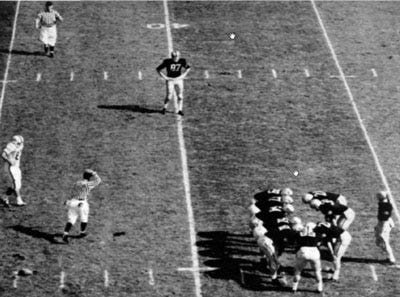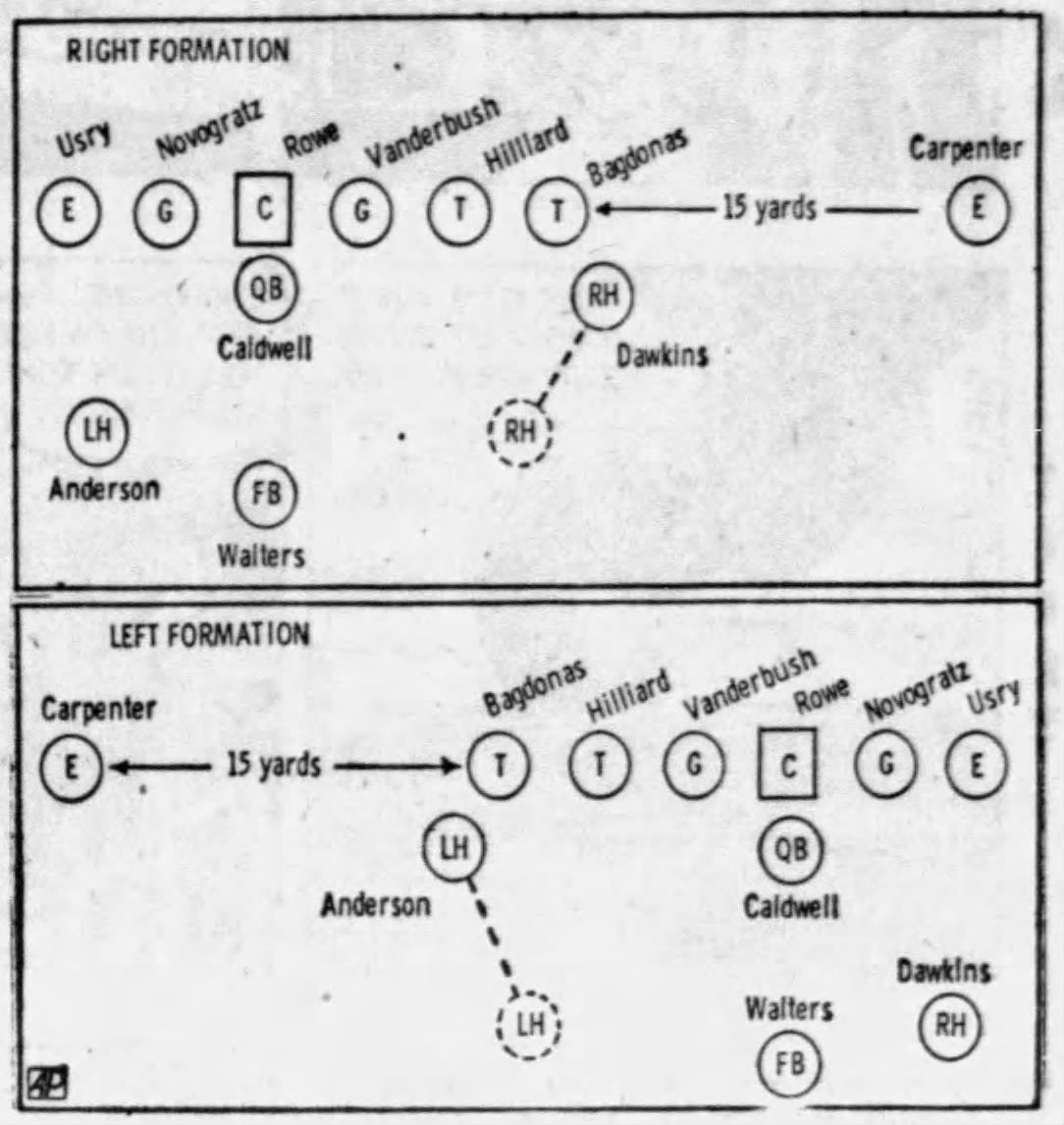Today's Tidbit... Army's Lonesome End
Earl Blaik needed something besides a Heisman Trophy winner to spice up his final season as Army's football coach, so he opted for the Lonesome End, which foreshadowed the no huddle offense.
Bill Carpenter was the Lonesome End. The 6' 2", 205-pound trackster was an attractive target and an All-America selection in 1959, but he received most of his attention during the 1958 season. That year Blaik had Carpenter align 15 yards wide of the strongside tackle. While that was not unusual, the odd bit was that Blaik had Carpenter stay wide, never joining his teammates in the huddle.
Other aspects of the formation were unusual in that Carpenter and his linemates aligned in an unbalanced formation, flopping the strong and weak sides depending on which side of the field the ball was on. Meanwhile, the halfbacks retained their positions on the left and right side, with the right halfback being Heisman winner Pete Dawkins.
Blaik expected most opponents to defend the talented Carpenter with two players, and since Army sometimes ran plays in quick succession, the defender(s) had to remain wide. (Defenses huddled in those days, so forcing one or two defenders to remain wide upset their routine.)
The combination of the Lonesome End, Pete Dawkins, and other talented players allowed Army to finish the year ranked #3 with an 8-0-1. It was the sixth time Army finished the year ranked in the top 5 and the seventh time they went undefeated during Blaik's eighteen years coaching along the Hudson.
Football Archaeology is reader-supported. Click here to buy one of my books or otherwise support the site.




